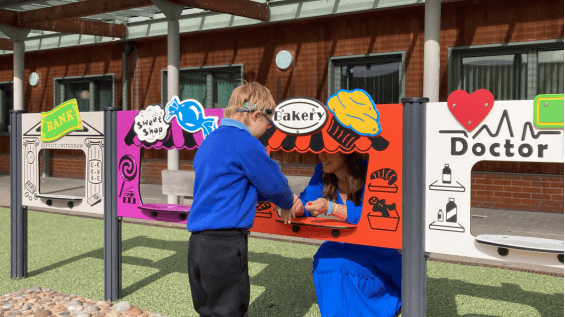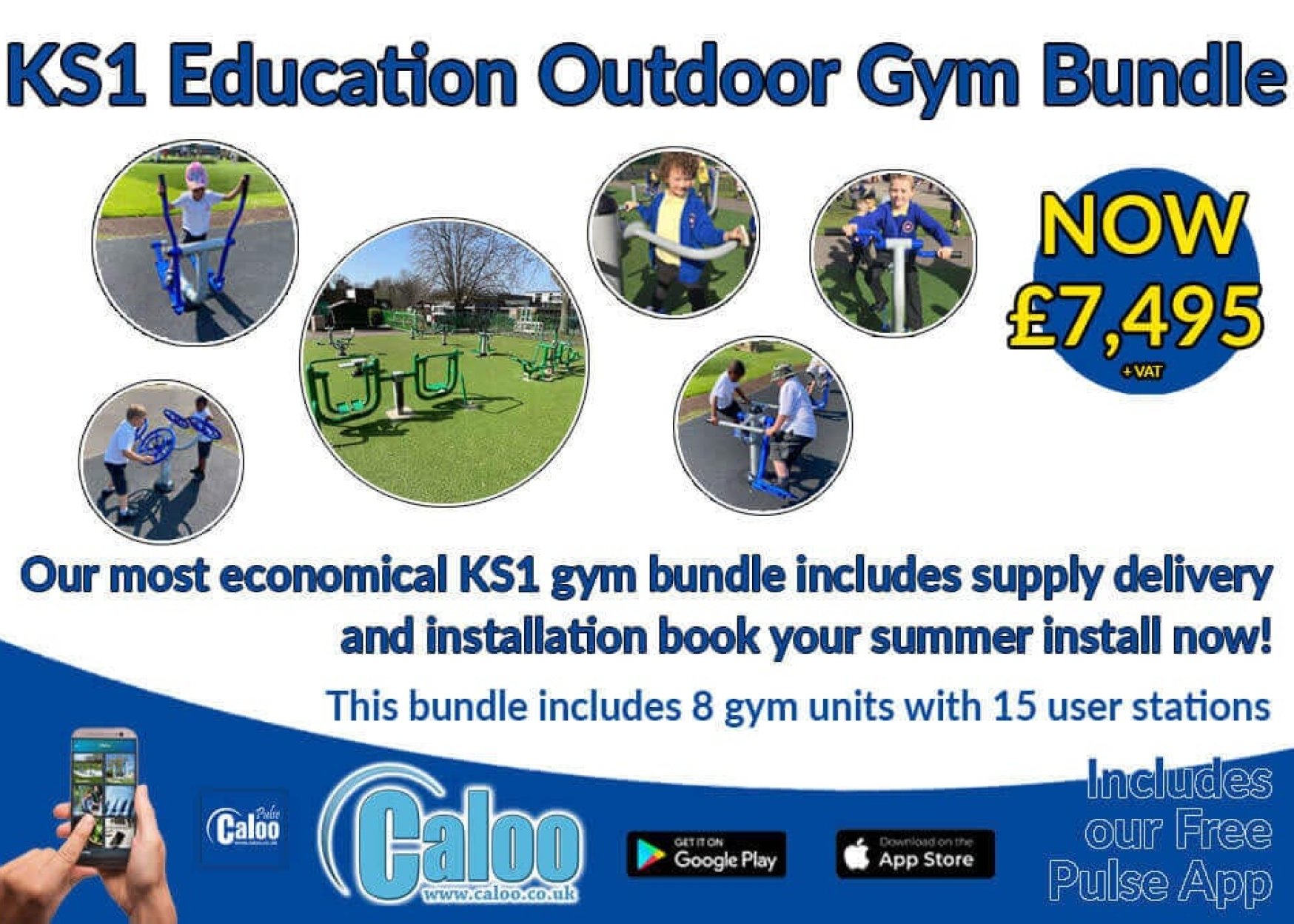
Oct

How can Playground Equipment support Learning outside of the Classroom
Learning is not confined to the four walls of a classroom. Across the UK, schools are recognising that outdoor spaces provide powerful opportunities to support learning, health, and wellbeing. Well-planned playground equipment for schools does more than give pupils a space to let off steam at breaktime. It plays an active role in reinforcing curriculum objectives, building resilience, and helping children develop lifelong habits of physical activity.
How does outdoor play equipment enhance learning beyond the classroom, with benefits for physical development, social growth, creativity, and cognitive skills across all stages of education?
The Role of Play in Education
Play is widely recognised as a foundation for learning. In early years settings, the EYFS framework highlights the role of play in supporting the seven areas of development. As children move through primary and secondary school, outdoor environments continue to underpin physical and social development, complementing classroom learning with real-world experiences.
Physical activity is also a public health priority. The UK Chief Medical Officers recommend that children and young people take part in an average of 60 minutes of moderate to vigorous physical activity daily (UK Chief Medical Officers, 2019). Playgrounds are one of the most effective ways for schools to help pupils meet this target.
Physical Development Beyond PE Lessons
Physical development is often associated with PE lessons, but outdoor play offers unique, unstructured opportunities to build fitness and motor skills.
Climbing frames and trim trails: Improve strength, balance, and coordination while encouraging risk assessment in a safer play space.
Swings, slides, and spinners: Develop core stability and spatial awareness.
Open play areas: Provide space for running, chasing, and informal sports that build cardiovascular fitness.
A review by the Education Endowment Foundation highlights that physically active pupils often show better concentration and improved classroom behaviour (EEF, 2018). By investing in playground equipment, schools give pupils more chances to be active outside of formal PE lessons, which may in turn enhance academic focus.
Social and Emotional Growth Outdoors
• Outdoor play also nurtures important social and emotional skills.
• Team-based equipment, such as group swings or large climbing nets, promotes cooperation, patience, and problem-solving.
• Role play areas encourage empathy and communication, as children create stories together and take on different perspectives.
• Quiet play zones with sensory panels or seating provide inclusive options for pupils who may feel overwhelmed in large groups.
Sport England’s Active Lives survey reported that children who are more physically active are also more likely to report higher levels of happiness, resilience, and social trust (Sport England, Active Lives Children and Young People Survey 2023–24). For schools, outdoor equipment contributes directly to both well-being and social development.
Cognitive and Creative Benefits
• Outdoor play supports thinking skills and creativity in ways that differ from indoor learning.
• Markings for phonics and numbers link literacy and mathematics to movement, reinforcing classroom concepts in active ways.
• Problem-solving equipment, such as climbing challenges, encourages strategic thinking.
• Stages and storytelling corners allow pupils to develop imagination, performance skills, and confidence.
By integrating creative and cognitive opportunities into playground design, schools create environments where pupils practise academic skills while playing. This aligns with research from the EEF showing that well-structured play can improve early literacy and numeracy outcomes.
Age-Appropriate Equipment Across Education
EYFS
Outdoor play equipment should support the seven areas of learning identified in the EYFS framework. Sensory play, role play units, low climbing frames, and markings for numbers and letters all contribute to holistic development.
Primary Schools
At this stage, pupils are ready for more physically challenging equipment such as trim trails, climbing towers, and sports markings. Playgrounds also support key objectives in the Key Stage 1 and Key Stage 2 curriculum, including teamwork, problem-solving, and building resilience.
Secondary Schools
Physical activity often declines in adolescence, especially for girls (Sport England, 2024). Equipment such as outdoor gyms, MUGAs, and social spaces can help schools keep pupils engaged in physical activity. Outdoor areas designed for older children can develop independence and support lifelong fitness habits.
Further Education
Colleges and sixth forms can benefit from outdoor gyms and sports spaces that attract young adults. With the right design, outdoor facilities help students manage stress, stay active, and socialise, supporting mental health and wellbeing as they transition to adulthood.
How Playground Equipment Extends Classroom Learning
• Outdoor spaces can act as extensions of the classroom itself.
• Outdoor classrooms allow teachers to deliver lessons in natural settings, making science, geography, or literature more engaging.
• Maths trails bring arithmetic into the playground, turning counting and sequencing into active experiences.
• Nature areas encourage enquiry and observation, supporting subjects like biology and environmental science.
Cross-curricular outdoor learning makes lessons memorable, improves engagement, and helps pupils understand the relevance of classroom concepts in the wider world.
How Caloo Supports Schools
Caloo has extensive experience in designing and installing playground equipment for schools that aligns with educational goals.
Tailored consultation: Projects begin with understanding each school’s priorities, whether EYFS literacy, primary teamwork, or secondary fitness.
Age-appropriate solutions: From sensory play for nurseries to outdoor gyms for colleges, Caloo delivers equipment suited to each stage of education.
Safety and compliance: All installations meet BS EN safety standards, with surfacing designed for accessibility and durability.
Long-term support: Maintenance, inspections, and spare parts ensure equipment remains safe and effective for years to come.
By working in partnership with schools, Caloo creates outdoor spaces that are more than playgrounds. They become hubs for learning, wellbeing, and community pride.
FAQs
What are the benefits of playground equipment for schools?
It supports physical health, social development, creativity, and cognitive learning, complementing classroom teaching.
How does playground equipment support learning?
Playgrounds reinforce literacy, numeracy, problem-solving, and teamwork through active experiences.
What equipment suits primary versus secondary schools?
Primary schools benefit from climbing frames, trim trails, and markings. Secondary schools benefit from MUGAs, outdoor gyms, and social spaces.
How do schools ensure safety in playgrounds?
Playground equipment should comply with BS EN standards and be paired with safe surfacing. Regular inspections and maintenance are essential.
Playgrounds are more than spaces for fun. They are vital tools for education, supporting physical, social, and academic development at every stage of schooling. By investing in playground equipment for schools, educators extend learning beyond the classroom, creating environments where pupils thrive both academically and personally.
If your school is considering new playground equipment, Caloo can help design and install solutions tailored to your space and objectives. Contact our team to explore how we can support your school in creating spaces that enrich learning and wellbeing.

















